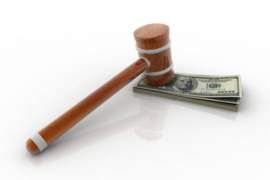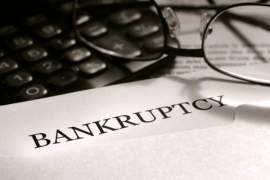
Payment Plan Rehabilitation for those with Regular Income

Related Forms
Schedule B - Personal Property
Schedule C - Property Claimed as Exempt
Schedule D - Creditors Holding Secured Claims
Schedule E - Creditors Holding Unsecured Priority Claims
Schedule F - Creditors Holding Unsecured Nonpriority Claims
Schedule G - Executory Contracts and Unexpired Leases
Schedule I - Current Income of Individual Debtor(s)
Schedule J- Current Expenditures of Individual Debtor(s)
Summary of Schedules (Includes Statistical Summary of Certain Liabilities)
View AllRepresenting the aims and struggles of lower- and middle-class Americans, Chapter 13 payment plan rehabilitation is a stark departure from the big-budget appeals (and, as some would argue, unfair protections) of Chapter 11 reorganization schemes. Certainly, there are risks to this course of action, notably in the area of credit. All the same, inaction in addressing one's debts may impair one's credit rating even more severely. Moreover, it is not as if a declaration of bankruptcy under Chapter 13 means families will lose everything.
Chapter 13 bankruptcy is a "forward-thinking" form of bankruptcy that many would consider a long-term debt adjustment setup. In many respects, it is a fair balance between complete lack of accountability to past engagements with creditors and complete failure to manage one's financial affairs.
Purpose and Usage
The specifics of Chapter 13 law are fairly unique as far as the roles of the court officers and the purpose of court proceedings. One certain benefit to Chapter 13 bankruptcy seekers is that they will be afforded a minimal amount of contact with creditors under most circumstances, and certainly less than they would stand to have to endure in a Chapter 7 due to an automatic stay.
In the meeting of creditors and the subsequent hearing, however, direct contact between debtors and creditors is inevitable, and these parties will ask and respond to pointed questions about provisions of the plan drafted by the debtors.
Following these conventions, the confirmation of the plan (or sometimes, installments will be forced to begin in the absence of an agreement) will start the (re)payment process. The debtor will regularly submit specified amounts to the trustee appointed by the courts, who will then allot these funds to the creditors commensurate with their claims.
Useful Information
In all likelihood, the most useful information for debtors will be how they can reduce, restructure, and otherwise remove their debt. Thus, it is prudent to know when they may become eligible and how they may be disqualified. First of all, as opposed to municipal and corporate debtors, individual debtors under Chapter 13 law are seldom permitted to take out new loans in hopes of addressing their financial woes. Quite generally, such a measure would be ill-advised, and in any event, only the trustee with oversight of one's case may give their consent.
As most loans will not be allowed in bankruptcy court, many reprieves from financial obligations will likewise not be assented to. Especially if debts are needed for everyday living (e.g. child support, restitution) or they stem from a particularly large investment (e.g. mortgage payments, secondary education loan repayments), these monies must be continually supplied by debtors.
All this aside, for the Chapter 13 filer in dire straits, debt relief may come to the rescue. Given some unforeseeable "hardship" that affects a regular income earner's ability to do just that, the judge may approve of a discharge of a portion of the petitioner's debts.
Legal Implications
Even if an applicant is not charged with a specific crime, a violation of terms of Chapter 13 of the Bankruptcy Code may still be enough to warrant dismissal of one's case. This may not sound like much to some, but in instances where the need for relief is a pressing one, the ability or inability to secure a long-term repayment plan may be a make-or-break situation. Moreover, a dismissal may hurt the debtor's ability to petition for Chapter 13 bankruptcy or Chapter 7 bankruptcy at a later date. As such, there are long-term implications attached to this ruling.
One set of conditions that may affect an invalidation of one's case is any delay or incongruity in filing procedure. Debtors must be sure to accurately spell out all debts/creditors and income/expenses, and must also submit plans according to their given deadlines for fear of their requests being denied. In addition, all requirements of dependent parties (i.e. domestic support obligations) must continue to be paid on time and all meritorious creditors' objections must be heard and dismissed in their own right by the judge.
Pros and Cons
For a number of filers and a number of reasons, Chapter 13 individual debt readjustment may be a superior option as compared with Chapter 7 liquidation. One of the major incentives of the former is the ability of debtors to forestall banks from foreclosing on and repossessing their homes over which Chapter 7 assets do not have governance.
Besides, as Chapter 13 is specifically a repayment plan, it is certainly a more effective means of consolidating existing debt monies to be issued to creditors. On top of this, these repayments are allowed to be made without the threat of creditors collecting all the while. The doctrine of automatic stay preempts previous contractual terms.
For all of these potential benefits, there are flip-sides that are practical limitations. While a petitioning party's house may be safe over the span of a Chapter 13 case, this means that debtors still owe regular mortgage payments. Debt refinancing and consolidation, meanwhile, may be of convenience to the bankruptcy seeker, but their credit rating may suffer significantly in the process. Last but not least, though they may not have to answer to creditors, debtors still must give them money every 14 days for upwards of three years.
Filing Process
Throughout Chapter 13 court proceedings, there are important forms that need to be completed according to legal protocol. However, before one even gets to the forms, there are filing and general administrative fees that must be paid in full unless otherwise directed by the court.
As for the initial official petition itself, it must be filed alongside statements relating to an individual's/couple's executory contracts, outstanding financial obligations, and yearly gains after living expenses.
If the court agrees to hear this case, a petitioning party is required to pass along a repayment plan to the bankruptcy court within two weeks of the receipt of the original petition. At this point, it is the responsibility of the trustee and creditors to review the plan and address any questions/concerns about the terms of this agreement and to submit claims to monies they are owed. Requests for waiver of pre-petition debts, also known as discharges, must too be cleared with the court and creditors both for objections or considerations.
Even evidence of the completion of a minimum number of hours of a credit counseling course must be included in an application for Chapter 13 bankruptcy as per amendments of the Bankruptcy Abuse Prevention and Consumer Protection Act (BAPCPA) of 2005.
Governing Laws
In the less-than-half a century since Chapter 13 was officially added to the United States Code, this division of the Code has seen sweeping changes. It was not until the year 1978 and the passage of the Bankruptcy Reform Act to address the outmoded policies still retained from the implementation of the Bankruptcy Act of 1898 that both Chapter 11 business reorganization and Chapter 13 rehabilitation for wage earners were formed from lesser pieces of legislation and formally added to the Bankruptcy Code (Title 11), which is where they rest today.
Fairly recently, the 2005 BAPCPA brought pertinent modifications to Chapter 7 and Chapter 13. As noted, the eligibility requirement of completion of a credit counseling course was realized as of the Act, as were tougher standards by which both Chapter 7 and Chapter 13 relief could be awarded, especially in the arena of debts to be discharged.
Statistics
While said restrictions affected by the Bankruptcy Abuse Prevention and Consumer Protection Act were intended to make it harder for individuals to apply for bankruptcy, despite these difficulties just the opposite has occurred in recent times with Chapter 13. By more than a 2:1 ratio, Chapter 7 applications are still processed more frequently by the U.S. Bankruptcy Court system, and overall, other forms of bankruptcy have larger year-to-year percentage increases. Nonetheless, Chapter 13 filings are still increasing at steady rates; just five years ago annual declarations were made at a rate below 300,000, but as of fiscal year 2009, these numbers approach 400,000, a dramatic upswing for such a short time.
Another idiosyncrasy within Chapter 13's statistical data are the variances measured across state lines. Different court districts can lay claim to the highest number of reported bankruptcies in the last few years for Chapter 13 than with all other forms of domestic bankruptcy.
Chapter 7 vs. Chapter 13
The comparisons made between Chapter 7 and Chapter 13 by jurists, policymakers, legal students, and others are not simply superficial or coincidental. In fact, Chapter 13 individual debt adjustment was more or less deliberately authorized as an antidote of sorts to the wealth of filings seeking immunity from debt collections via liquidation of debtors' estates. Today, it is used as an incentive for debtors who wish to avoid foreclosure on their homes (Chapter 7 property exemptions do not govern delinquent mortgage payments).
Chapter 13 also was specifically designed as a means of relief for the individual consumer-debtor, not just simply something for the business owner-doer, and this somewhat loose distinction between the two chapters is reflected in the common ruling of judges to convert a liquidation case to a series of rehabilitation hearings.
Yet an additional benefit recognized in Chapter 13 cases is the ability to discharge certain preexisting debts for which Chapter 7 applicants are not eligible. This is tempered somewhat by the fact that more debts will usually have to be paid in Chapter 13 bankruptcy proceedings before a discharge may be awarded.
Chapter 13 Attorney
Though debtors are legally entitled to represent themselves in Chapter 13 bankruptcy court, they are not encouraged to waive their right to legal representation, especially as an attorney may be afforded to individuals at no additional cost to them. In bankruptcy court, a debtor may be prompted to respond to claims he or she knowingly filed "in bad faith" or consciously failed to list certain debts. In these instances, a bankruptcy attorney with intimate knowledge of Chapter 13 law will be essential for an informed defense.
Such an attorney will also be useful in the defense against predatory businesses/organizations trying to get one's money for untrustworthy advice and other services, and therefore, should be consulted prior to entering into any third-party agreements designed to offer assistance in fighting a foreclosure bid or accurately fill out a Chapter 13 bankruptcy declaration petition for a "small fee."
NEXT: Specific Planning Management Skills





















